: 2026
: 2025
: 2024
: 2023
: 2022
: 2021
: 2020
: 2019
: 2018
: 2017
: 2016
: 2015
: 2014
: 2013
: 2012
: 2011
: 2010
: 2009
: 2008
: 2007
:



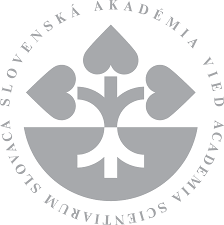



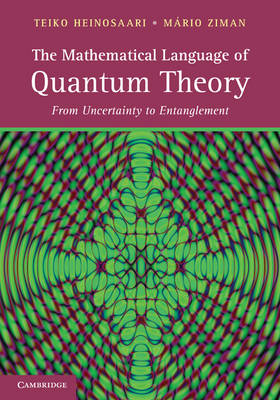
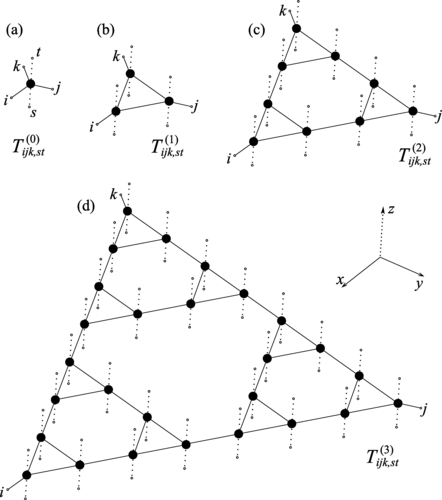 11.12.2018 Publication
11.12.2018 Publication
Tensor-network study of a quantum phase transition on the Sierpiński fractal
The transverse-field Ising model on the Sierpiński fractal, which is characterized by the fractal dimension log23≈1.585, is studied by a tensor-network method known as the higher-order tensor renormalization group. We analyze the ground-state energy and the spontaneous magnetization in the thermodynamic limit. The system exhibits the second-order phase transition at the critical transverse field hc=1.865. The critical exponents β≈0.198 and δ≈8.7 are obtained. Complementary to the tensor-network method, we make use of the real-space renormalization group and improved mean-field approximations for comparison.
by
Roman Krcmar, Jozef Genzor, Yoju Lee, Hana Čenčariková, Tomotoshi Nishino, and Andrej Gendiar
Phys. Rev. E 98, 062114 (2018) | +++ | EXSES (APVV-16-0186) |
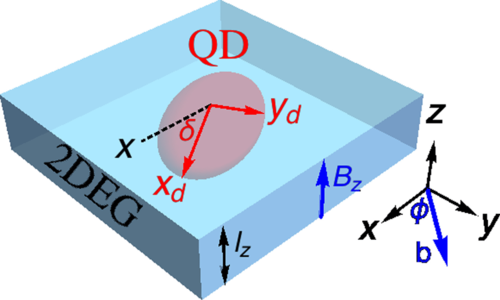 27.11.2018 Publication
27.11.2018 Publication
g-factor of electrons in gate-defined quantum dots in a strong in-plane magnetic field
We analyze orbital effects of an in-plane magnetic field on the spin structure of states of a gated quantum dot based in a two-dimensional electron gas. Starting with a k⋅p Hamiltonian, we perturbatively calculate these effects for the conduction band of GaAs, up to the third power of the magnetic field. We quantify several corrections to the g-tensor and reveal their relative importance. We find that for typical parameters, the Rashba spin-orbit term and the isotropic term, H43∝P2B⋅σ, give the largest contributions in magnitude. The in-plane anisotropy of the g-factor is, on the other hand, dominated by the Dresselhaus spin-orbit term. At zero magnetic field, the total correction to the g-factor is typically 5%–10% of its bulk value. In strong in-plane magnetic fields, the corrections are modified appreciably.
by
Peter Stano, Chen-Hsuan Hsu, Marcel Serina, Leon C. Camenzind, Dominik M. Zumbühl, and Daniel Loss
Phys. Rev. B 98, 195314 (2018) | +++ | NONE |
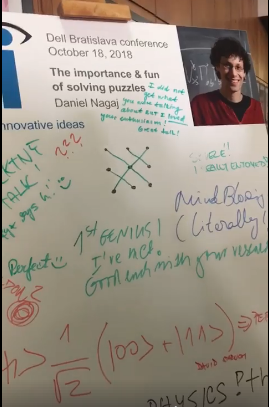 20.10.2018 Popularisation
20.10.2018 Popularisation
The importance of (quantum) puzzles A popular-science talk at Dell 3i conference in Bratislava given by Daniel Nagaj. | +++ | |
![[img]](img/news/news2018pub_majorana.png) 3.11.2018 Publication
3.11.2018 Publication
Majorana Kramers pairs in higher-order topological insulators
We propose a tune-free scheme to realize Kramers pairs of Majorana bound states in recently discovered higher-order topological insulators (HOTIs). We show that, by bringing two hinges of a HOTI into the proximity of an s-wave superconductor, the competition between local and crossed Andreev pairing leads to the formation of Majorana Kramers pairs, when the latter pairing dominates over the former. We demonstrate that such a topological superconductivity is stabilized by moderate electron-electron interactions. The proposed setup avoids the application of a magnetic field or local voltage gates, and requires weaker interactions compared with nonhelical nanowires.
by
Chen-Hsuan Hsu, Peter Stano, Jelena Klinovaja, Daniel Loss
Phys. Rev. Lett. 121, 196801 (2018) [arXiv:1805.12146] |+++| NONE |
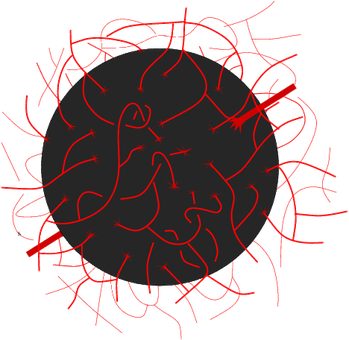 21.11.2018 Conference
21.11.2018 Conference
Gravity in qubits Participants in the QSS consortium will meet in November, 21-24 in Slovakia (Bratislava and Smolenice) for an exceptional colloquium, to discuss opportunities for the cross fertilization of Quantum Computing and Quantum Gravity. Particular emphasis will be given to opportunities for near future experiments to probe quantum gravitational effects and theoretical implications. Scroll down or use the shortcuts below for more information. | +++ | |
 7.11.2018 Popularisation
7.11.2018 Popularisation
Day of Open Days at Institute of Physics On November 7th from 9:00-16:00 the doors of our offices are open and everyone is welcome to meet us. We are happy to show you how we are contributing to quantum technologies, to explain to you our scientific puzzles, answer almost all your curious questions about quantum physics and leave you with new questions (even if you do not have any). Do you know the name of Slovak physicists hidden in the picture on the right? Deň otvorených dverí Fyzikálneho ústavu SAV Pozývame Vás na stretnutie s nami dňa 7. novembra medzi 9:00 a 16:00, kedy sú dvere na našom pracovisku otvorené. Radi Vám ukážeme akým spôsobom sa podieľame na výskume kvantových technológií, vysvetlíme Vám naše vedecké otázky, odpovieme na takmer na každú Vašu otázku o kvantovej fyzike a nechmáme Vás odísť s novými otázkami aj v prípade, že zatiaľ žiadne nemáte. Viete meno ktorého slovenského fyzika je skryté v obrázku? | +++ | |
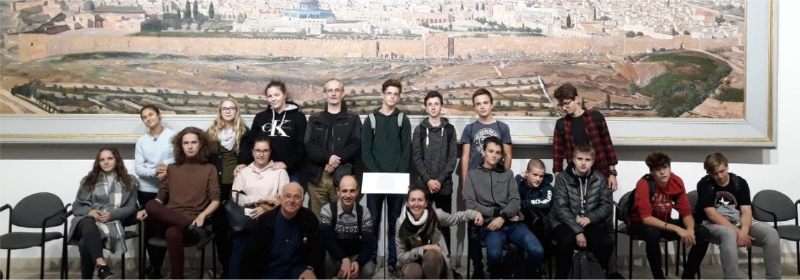 5.10.2018 Popularisation
5.10.2018 Popularisation
Statistics in biology popular-science lecture (in Slovak) of Andrej Gendiar in Mendel Museum (Brno, Czech Republic) on the necessity of scientific method and statistical analysis in the work of Gregor Mendel - "father" of modern genetics. (In Slovak)
Gregor Mendel využil poznatky štatistikej matematiky, ktorú študoval, keď krížil hrach počas šiestich rokov. Na základe štatistických vlastností dedičnosti pozoroval pomer 3:1 sfarbenia kvetov a tvarov hrachu, aby tak zaviedol pojmy dominatnej a recesívnej alely, čo dalo základ modernej genetiky.
|
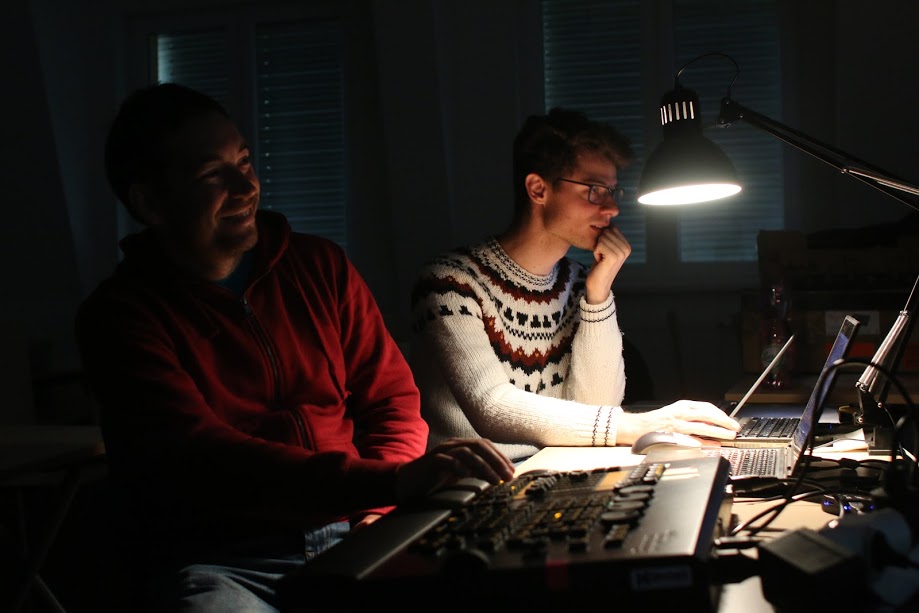 29.9.2018 Popularisation
29.9.2018 Popularisation
QUantum technologies for everyBodE (in Slovak) Počas tohtoročnej Európskej Noci Výskumníka v piatok 29.septembra vám radi povieme niečo o tom ako kvantová fyzika mení svet okolo nás. Náš stánok v Starej tržnici v Bratislave sa volá KvantOvé teChnológie pre KAždého. | +++ | |
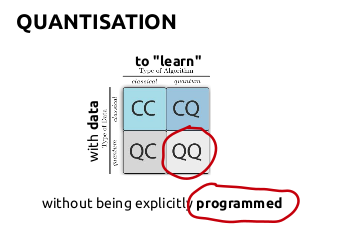 19.9.2018 Invited talk
19.9.2018 Invited talk
Limitations on learning of quantum processes at Quantum Machine Learning Plus workshop (Innsbruck, Austria) | +++ | by Mario Ziman
We will discuss an instance of the quantum information analogue of the learning process and investigate in detail the limitations for the task of storage-and retrieval of quantum dynamics. We will show that for the approximate case the optimal quantum learning is essentially classical, however, in the probabilistic case, the storage of dynamics in quantum states is beneficial.
|
![[img]](https://m.smedata.sk/api-media/media/image/sme/8/35/3571678/3571678_1200x.jpeg) 11.9.2018 Popularisation, Interview, Dennik SME
11.9.2018 Popularisation, Interview, Dennik SME
Mladý vedec roka: Je skvelý pocit, keď niečo viete ako jediný na svete Interview with Daniel Reitzner about quantum physics and quantum technologies. For his research on the subjects of quantum incompatibility and quantum walks he was awarded the Slovak national price Young researcher of the year 2017. The interview is entitled "Young researcher of the Year: It is a fascinating feeling, if you know something as the only one in the world". Read (in Slovak). |
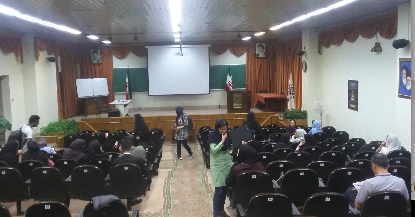 11.9.2018 Invited talk
11.9.2018 Invited talk
Incompatibility and nonlocality in quantum process GPTs at International Iranian Conference on Quantum Information (Tehran, Iran) | +++ | by Mario Ziman
I will introduce the quantum process theory as an existing example of general probabilistic theory. Further, I will study the incompatibility of the measurements in such framework pointing out the qualitative and quantitative differences from the incompatibility of POVMs. These results motivate the analysis of nonlocality and we will show that in CHSH settings this framework beat the Tsirelson bound and achieve the maximal algebraic value.
|
![[img]](https://a-static.projektn.sk/2018/09/180205min_skolstvo_veda_3520054-690x460.jpg) 11.9.2018 Interview, Dennik N
11.9.2018 Interview, Dennik N
Teoretický fyzik Vladimír Bužek: Chaos okolo SAV hovorí našim vedcom vo svete, aby sa nevracali Interview with Vladimír Bužek about his view on the current situation with the "formal" transformation of the institutes of the Slovak Academy of Sciences that ended up in a complete administration mess ... The article was published in Slovak nespaper Dennik N and is entitled "Theretical physicist Vladimír Bužek: Chaos around SAS tells to our researchers abroad not to return". Read (in Slovak). |
 11.9.2018 Invited talk
11.9.2018 Invited talk
Perfect probabilistic storing and retrieving of unitary channels at International conference on quantum technologies PhysTech Quant (Moscow, Russia) | +++ | by Michal Sedlak
The original aim of quantum memory is to store quantum states, however, here we address the question of a quantum memory storage of quantum dynamics. In particular, we design the optimal protocol for N to 1 probabilistic storing-and-retrieving of unitary channels on ddimensional quantum systems. If we may access the unknown unitary gate only N-times, the optimal success probability of perfect retrieving of its single use is N/(N-1+d^2). The derived size of the memory system improves exponentially the known upper bound on the size of the program register needed for probabilistic programmable quantum processors.
|
 11.9.2018 Invited talk
11.9.2018 Invited talk
Decoherence in Quantum Walk Searches at International conference on quantum technologies PhysTech Quant (Moscow, Russia) | +++ | by Daniel Reitzner
Decoherence in quantum(-walk) searches has been studied in several different settings. The noise models used, were, however, prodominantly non-localized, affecting either the oracle, or the whole state space. In this presentation we study Grover search under the influence of localized partially dephasing noise. As an example in quantum walk searches on physical graphs, part of a graph can be affected by the noise. In these settings we find, that in the case when the size of the affected subspace is rather small, the quadratic speedup can be retained, while for uncorrelated noise on large subspaces, the algorithm in its actual form does not help any more. We also provide a general criterion for search efficiency in the terms of the size of the affected subspace and the noise rate. Presented are first order approximations obtained by a technique of invariant subspaces adapted to mixed states.
|
![[img]](img/news/news2018hyperfine_phonon.png) 25.8.2018 Publication
25.8.2018 Publication
Hyperfine-phonon spin relaxation in a single-electron GaAs quantum dot
Understanding and control of the spin relaxation time T1 is among the key challenges for spin-based qubits. A larger T1 is generally favored, setting the fundamental upper limit to the qubit coherence and spin readout fidelity. In GaAs quantum dots at low temperatures and high in-plane magnetic fields B, the spin relaxation relies on phonon emission and spin–orbit coupling. The characteristic dependence T1 ∝ B−5 and pronounced B-field anisotropy were already confirmed experimentally. However, it has also been predicted 15 years ago that at low enough fields, the spin–orbit interaction is replaced by the coupling to the nuclear spins, where the relaxation becomes isotropic, and the scaling changes to T1 ∝ B−3. Here, we establish these predictions experimentally, by measuring T1 over an unprecedented range of magnetic fields—made possible by lower temperature—and report a maximum T1 = 57 ± 15 s at the lowest fields, setting a record electron spin lifetime in a nanostructure.
by
Leon C. Camenzind, Liuqi Yu, Peter Stano, Jeramy D. Zimmerman, Arthur C. Gossard, Daniel Loss, and Dominik M. Zumbühl
Nature Communications 9, 3454 (2018) |+++| NONE |
![[img]](img/news/news2018d3$ifru7.png) 24.8.2018 Popularisation
24.8.2018 Popularisation
D3$ifru7 - šifrovacia hra v rámci Európskej noci výskumníkov 2018 In collaboration with organizers of European Researcher's Night 2018 we have designed a cipher game competition. Do you want to try? Let us help you that ciphers are in Slovak language. Let's play with us. Are you more than 16 years old? Age is just a number, but if you are below 16, your chances are a bit smaller. We are seeking for best candidate. http://sifrovacka.nocvyskumnikov.sk/ |
 23.6.2018 Invited talk
23.6.2018 Invited talk
Process estimation in the presence of time-invariant memory effects at 50th Symposium on Mathematical Physics (Torun, Poland) | +++ | by Mario Ziman
Any repeated use of a fixed experimental instrument is subject to memory effects. We design an estimation method uncovering details of the underlying interaction between the system and the internal memory without having any experimental access to the memory degrees of freedom. In such case, by definition, any memoryless quantum process tomography (QPT) fails because the observed data sequences do not satisfy the elementary condition of statistical independence. However, we show that the randomness implemented in certain QPT schemes is sufficient to guarantee the emergence of observable statistical patterns containing complete information on the memory channels. We demonstrate a heuristic algorithm for the case of qubit memory channels with two-dimensional memory. Interestingly, we find that for an arbitrary estimation method, the memory channels generated by controlled unitary interactions are indistinguishable from the memoryless unitary channels.
|
![[img]](img/news/news2018shorter_proofs.png) 8.6.2018 Publication
8.6.2018 Publication
Shorter unentangled proofs for ground state connectivity
Can one considerably shorten a proof for a quantum problem by using a protocol with a constant number of unentangled provers? We consider a frustration-free variant of the QCMA -complete ground state connectivity (GSCON) problem for a system of size n with a proof of superlinear size. We show that we can shorten this proof in QMA(2): There exists a two-copy, unentangled proof with length of order n, up to logarithmic factors, while the completeness–soundness gap of the new protocol becomes a small inverse polynomial in n.
by
Libor Caha, Daniel Nagaj, Martin Schwarz
Quantum Inf. Processing 17, 174 (2018) |+++| QETWORK APVV-14-0878, SASPRO |
![[5in5]](img/news/news2018clocks.png) 5.6.2018 Publication
5.6.2018 Publication
Clocks in Feynman's computer and Kitaev's local Hamiltonian: Bias, gaps, idling, and pulse tuning
We present a collection of results about the clock in Feynman's computer construction and Kitaev's local Hamiltonian problem. First, by analyzing the spectra of quantum walks on a line with varying end-point terms, we find a better lower bound on the gap of the Feynman Hamiltonian, which translates into a less strict promise gap requirement for the quantum-Merlin-Arthur–complete local Hamiltonian problem. We also translate this result into the language of adiabatic quantum computation. Second, introducing an idling clock construction with a large state space but fast Cesaro mixing, we provide a way for achieving an arbitrarily high success probability of computation with Feynman's computer with only a logarithmic increase in the number of clock qubits. Finally, we tune and thus improve the costs (locality and gap scaling) of implementing a (pulse) clock with a single excitation.
by
Libor Caha, Zeph Landau, and Daniel Nagaj
Phys. Rev. A 97, 062306 (2018) |+++| QETWORK APVV-14-0878, OAQS VEGA 2/0130/15, SASPRO |
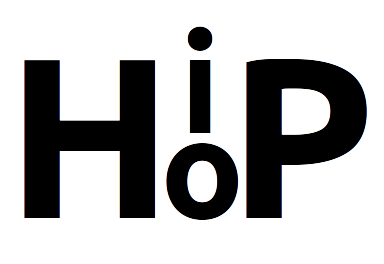 23.5.2018 Project
23.5.2018 Project
HIPHOP kick-off meeting Daniel Nagaj and Michal Sedlák are participating at kick-off meeting of Quantera project HiPhoP in Milan (23-24/05). | +++ | |
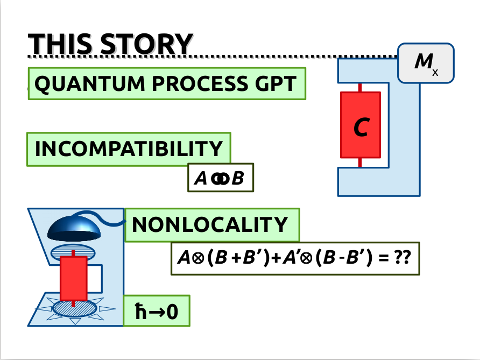 21.5.2018 Invited talk
21.5.2018 Invited talk
Incompatibility and nonlocality for quantum process GPT at HongKong-Shenzen workshop on Quantum Information Science in China. | +++ | by Mario Ziman
The generalized probabilistic theory of quantum processes will be introduced. It will be shown that incompatibility of observables of quantum processes are both qualitatively and quantitatively different from their state's counterpart, i.e. observables of quantum states (POVMs). Motivated by these findings we will show that Popescu-Rohrlich (nonlocal) boxes (beating the Tsirelson bound for Bell inequality) do exist in the existing structures of both quantum and classical theory. In particular, we will design an explicit example of measure-and-prepare non-local channel being the realization of Popescu-Rohrlich non-local (and non-signaling) box within the generalized probabilistic theory of processes. Interpretation and potential simulation of this form of (process) non-locality will be discussed.
|
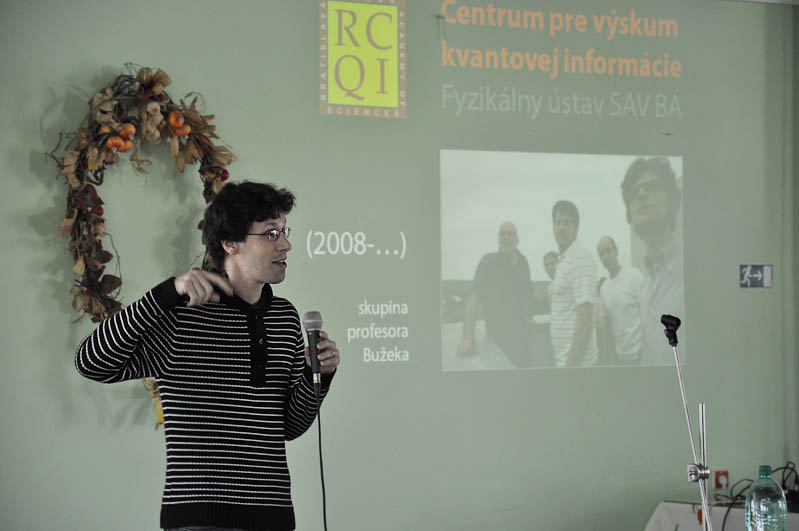 16.5.2018 Popularization
16.5.2018 Popularization
Klasická a kvantová kryptografia (in Slovak) Počas ŠVOČ konferencie na Gymnáziu Ľudovíta Štúra vo Zvolene zaujal prítomných študentov svojou prednáškou Daniel Nagaj. | +++ | |
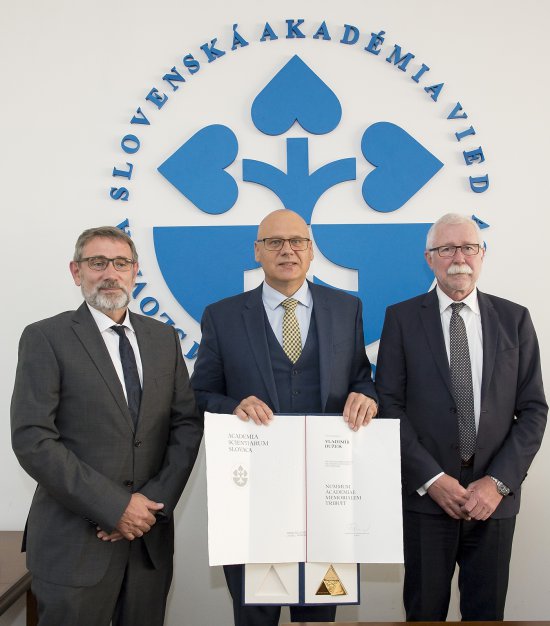 16.5.2018 Award
16.5.2018 Award
Gold Medal of Slovak Academy of Sciences for Prof. Vladimír Bužek For his extraordinary achievements in physics and also to celebrate his anniversary Prof. Vladimír Bužek was awarded the highest prize of Slovaka Academy of Sciences - SAS Gold Medal (in Slovak "Zlatá medaila SAV"). Prof. Bužek founded in Slovakia the school of quantum optics and quantum information processing. He is recognised worldwide for his discoveries on quantum cloning machines, quantum protocols for secret sharing and anonymous voting, quantum estimations, quantum programmable processors, etc. | +++ | (in Slovak) |
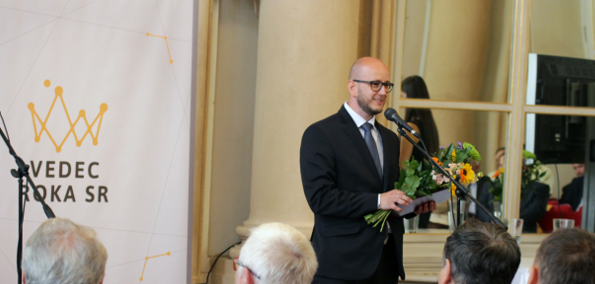 15.5.2018 Award
15.5.2018 Award
Who is The Young Scientist of the Year 2017 in Slovakia? We are all happy that our colleague Daniel Reitzner was awarded a prestigous national prize "Mladý vedec roka 2017" (Young Scientist of the Year 2017) for his work on quantum walks and quantum incompatibility. Congratulations! | +++ | |
![[img]](img/news/news2018tensor_network.png) 7.5.2018 Publication
7.5.2018 Publication
Tensor networks: Phase transition phenomena on hyperbolic and fractal geometries
One of the challenging problems in the condensed matter physics is to understand the quantum many-body systems, especially, their physical mechanisms behind. Since there are only a few complete analytical solutions of these systems, several numerical simulation methods have been proposed in recent years. Amongst all of them, the Tensor Network algorithms have become increasingly popular in recent years, especially for their adaptability to simulate strongly correlated systems. The current work focuses on the generalization of such Tensor-Network-based algorithms, which are sufficiently robust to describe critical phenomena and phase transitions of multistate spin Hamiltonians in the thermodynamic limit. Therefore, one has to deal with systems of infinitely many interacting spin particles. For this purpose, we have chosen two algorithms: the Corner Transfer Matrix Renormalization Group and the Higher-Order Tensor Renormalization Group. The ground state of those multistate spin systems in the thermodynamic equilibrium is constructed in terms of a tensor product state Ansatz in both of the algorithms. The main aim of this work is to generalize the idea behind these two algorithms in order to be able to calculate the thermodynamic properties of non-Euclidean geometries. In particular, the tensor product state algorithms of hyperbolic geometries with negative Gaussian curvatures as well as fractal geometries will be theoretically analyzed followed by extensive numerical simulations of the multistate spin models. These spin systems were chosen for their applicability to mimic intrinsic properties of more complex systems, such as social behavior, neural network, the holographic principle, including the correspondence between the anti-de Sitter and conformal field theory of quantum gravity. This work is based on tensor-network analysis and opens doors for the understanding of phase transition and entanglement of the interacting systems on the non-Euclidean geometries. We focus on three main topics: A new thermodynamic model of social influence, free energy is analyzed to classify the phase transitions on an infinite set of the negatively curved geometries where a relation between the free energy and the Gaussian radius of the curvature is conjectured, a unique tensor-based algorithm is proposed to study the phase transition on fractal structures.
by
Jozef Genzor, Tomotoshi Nishino, Andrej Gendiar
Acta Physica Slovaca 67, No.2, 85 – 206 (2017) |+++| QETWORK APVV-14-0878, OAQS VEGA 2/0130/15 |
![[img]](img/news/news2018spin_spin.png) 1.5.2018 Publication
1.5.2018 Publication
The influence of further-neighbor spin-spin interaction on a ground state of 2D coupled spin-electron model in a magnetic field
An exhaustive ground-state analysis of extended two-dimensional (2D) correlated spin-electron model consisting of the Ising spins localized on nodal lattice sites and mobile electrons delocalized over pairs of decorating sites is performed within the framework of rigorous analytical calculations. The investigated model, defined on an arbitrary 2D doubly decorated lattice, takes into account the kinetic energy of mobile electrons, the nearest-neighbor Ising coupling between the localized spins and mobile electrons, the further-neighbor Ising coupling between the localized spins and the Zeeman energy. The ground-state phase diagrams are examined for a wide range of model parameters for both ferromagnetic as well as antiferromagnetic interaction between the nodal Ising spins and non-zero value of external magnetic field. It is found that non-zero values of further-neighbor interaction leads to a formation of new quantum states as a consequence of competition between all considered interaction terms. Moreover, the new quantum states are accompanied with different magnetic features and thus, several kinds of field-driven phase transitions are observed.
by
Hana Čenčariková, Jozef Strečka, Andrej Gendiar, Natália Tomašovičová
Physica B: Condensed Matter 536, 432-438 (2018) |+++| QETWORK APVV-14-0878, EXSES APVV-16-0186, OAQS VEGA 2/0130/15 |
![[img]](img/news/news2018gendiar_reentrant_phase.gif) 15.4.2018 Publication
15.4.2018 Publication
Magnetization processes and existence of reentrant phase transitions in coupled spin-electron model on doubly decorated planar lattices
An alternative model for a description of magnetization processes in coupled 2D spin-electron systems has been introduced and rigorously examined using the generalized decoration-iteration transformation and the corner transfer matrix renormalization group method. The model consists of localized Ising spins placed on nodal lattice sites and mobile electrons delocalized over the pairs of decorating sites. It takes into account a hopping term for mobile electrons, the Ising coupling between mobile electrons and localized spins as well as the Zeeman term acting on both types of particles. The ground-state and finite-temperature phase diagrams were established and comprehensively analyzed. It was found that the ground-state phase diagrams are very rich depending on the electron hopping and applied magnetic field. The diversity of magnetization curves can be related to intermediate magnetization plateaus, which may be continuously tuned through the density of mobile electrons. In addition, the existence of several types of reentrant phase transitions driven either by temperature or magnetic field was proven.
by
Hana Čenčariková, Jozef Strečka, Andrej Gendiar
Journal of Magnetism and Magnetic Materials 452, 512-521 (2018) |+++| EXSES APVV-16-0186, OAQS VEGA 2/0130/15 |
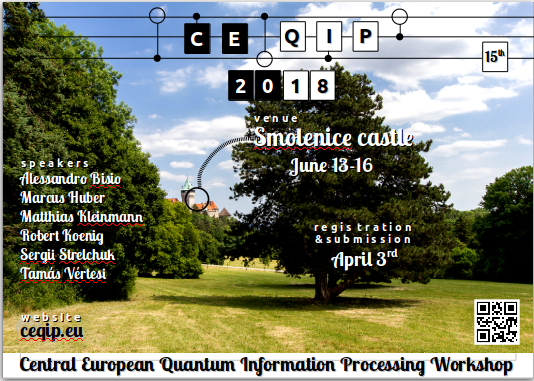 1.3.2018 Workshop
1.3.2018 Workshop
CEQIP 2018 We organize already 15th edition of traditional CEQIP workshops in June 13-16 in Smolenice castle. Come to enjoy the unique atmosphere of these meetings. We are looking forward to meet you there. | +++ | |
![[5in5]](img/news/news2018ibm_logo.png) 2.4.2018 Info
2.4.2018 Info
Quantum computing being one of 5-in-5 predictions of IBM At IBM Think conferece has presented the selection of five technologies that will help change our lives within 5 years. "Today, quantum computing is a researcher’s playground. In five years, it will be mainstream. It will be used extensively by new categories of professionals and developers looking to this emerging method of computing to solve problems once considered unsolvable." | +++ | |
![[<o>]](img/projects/hiphop.png) 1.4.2018 Project
1.4.2018 Project
High dimensional quantum Photonic Platform Europen QuantERA project HIPHOP is starting to be implemented today. | +++ | |
![[5in5]](img/news/news2018topo_insulator.png) 28.3.2018 Publication
Effects of nuclear spins on the transport properties of the edge of two-dimensional topological insulators
28.3.2018 Publication
Effects of nuclear spins on the transport properties of the edge of two-dimensional topological insulators
The electrons in the edge channels of two-dimensional topological insulators can be described as a helical Tomonaga-Luttinger liquid. They couple to nuclear spins embedded in the host materials through the hyperfine interaction, and are therefore subject to elastic spin-flip backscattering on the nuclear spins. We investigate the nuclear-spin-induced edge resistance due to such backscattering by performing a renormalization-group analysis. Remarkably, the effect of this backscattering mechanism is stronger in a helical edge than in nonhelical channels, which are believed to be present in the trivial regime of InAs/GaSb quantum wells. In a system with sufficiently long edges, the disordered nuclear spins lead to an edge resistance which grows exponentially upon lowering the temperature. On the other hand, electrons from the edge states mediate an anisotropic Ruderman-Kittel-Kasuya-Yosida nuclear spin-spin interaction, which induces a spiral nuclear spin order below the transition temperature. We discuss the features of the spiral order, as well as its experimental signatures. In the ordered phase, we identify two backscattering mechanisms, due to charge impurities and magnons. The backscattering on charge impurities is allowed by the internally generated magnetic field, and leads to an Anderson-type localization of the edge states. The magnon-mediated backscattering results in a power-law resistance, which is suppressed at zero temperature. Overall, we find that in a sufficiently long edge the nuclear spins, whether ordered or not, suppress the edge conductance to zero as the temperature approaches zero.
by
Chen-Hsuan Hsu, Peter Stano, Jelena Klinovaja, and Daniel Loss
Phys. Rev. B 97, 125432 (2018) |+++| |
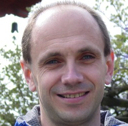 25.3.2018 Popularisation
25.3.2018 Popularisation
From microworld to macroverse popular-science discussion (in Slovak) of Andrej Gendiar with students in Narnia elementary school (Pezinok, Slovakia) on Newton physics, quantum physics and Einstein relativity theory. |
![[5in5]](img/news/news2018dipole.png) 26.2.2018 Publication
Dipolelike dynamical nuclear spin polarization around a quantum point contact
26.2.2018 Publication
Dipolelike dynamical nuclear spin polarization around a quantum point contact
We theoretically investigate the dynamical nuclear spin polarization in a quantum point contact (QPC) at finite magnetic field. We find that when the QPC is tuned to be spin selective, at the conductance of e2/h, a finite bias induces a dipolelike (spatially antisymmetric) nuclear polarization: at the QPC center the polarization is zero, while, for GaAs parameters, the nuclear spins down (up) are induced on the source (drain) side. We predict that the dipolelike polarization pattern can be distinguished from a uniform polarization due to a qualitatively different response of the QPC conductance to the NMR field.
by
Peter Stano, Tomosuke Aono, and Minoru Kawamura
Phys. Rev. B 97, 075440 (2018) |+++| |
![[MACROQUAS]](img/news/news2018macroquas.png) 25.2.2018 Workshop
25.2.2018 Workshop
MACROQUAS 2018 - Optomechanical route to macroscopic superpositions The aim of this workshop (22-23/03/2018, Bratislava) is to pin-point the suitability of levitated optomechanics as a test-bed for the investigation of the validity of quantum theory at the mesoscopic and macroscopic scale;; identify the fundamental challenges of such tests and the it will address opportunities offered by a space-based configuration;; compare the capabilities of levitated optomechanics to those of other platforms such as magneto-levitated one for the identification of the best-suited experimental platform. | +++ |. |
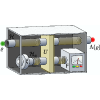 21.2.2018 Research publication
21.2.2018 Research publication
Incompatibility of unbiased qubit observables and Pauli channels
A quantum observable and a channel are considered compatible if they form parts of the same measurement device, otherwise they are incompatible. Constrains on compatibility between observables and channels can be quantified via relations highlighting the necessary tradeoffs between noise and disturbance within quantum measurements. In this paper we shall discuss the general properties of these compatibility relations and then fully characterize the compatibility conditions for an unbiased qubit observable and a Pauli channel. The implications of the characterization are demonstrated on some concrete examples.
by
Teiko Heinosaari, Daniel Reitzner, Tomáš Rybár, and Mário Ziman
Phys. Rev. A 97, 022112 (2018) | +++ | APVV-14-0878 (QETWORK), VEGA 2/0130/15 (OAQS), SASPRO (0055/01/01) |
![[HIPHOP]](img/news/news2018hiphop.png) 19.2.2018 Project
19.2.2018 Project
High dimensional quantum Photonic Platform The only successful QuantERA project with Slovak partner HiPhoP has been aproved for financing by the Slovak Academy of Sciences. QuantERA call is understood as the pre-phase of European Quantum Technology Flagship. The project will start on April 1st. |
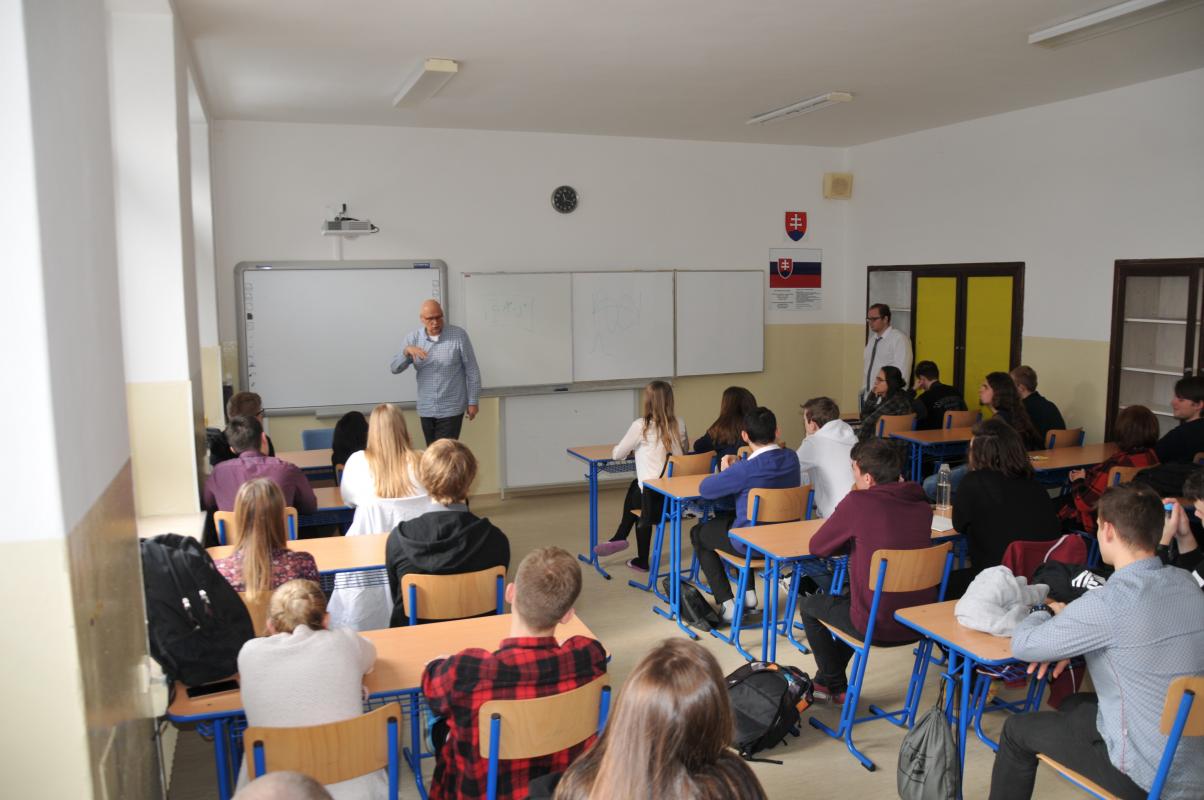 12.2.2018 Popularisation
12.2.2018 Popularisation
Theoretical physics Today, as an invited guest at the alumni event CEREBRUM of Gymnasium J. Papánka, Prof. Vladimír Bužek is delivering a popular talk for high school students describing his excitement by research in physics. | +++ | |
![[QUTE]](img/news/news2018school_bratislava.png) 25.1.2018 School
25.1.2018 School
1st eduQUTE school on quantum technologies This pilot school is organized as part of the preparation of a Slovak research initiative in quantum technologies. Its main goal is to introduce the elementary physical principles of quantum technologies developing by researchers in Slovakia. It is open for any student or researcher. The subjects will be presented at master level. | download leaflet | When: 19-22/02/2018 Place: Pavilón kvantových technológií, Dúbravská cesta 9, Bratislava - Patrónka [map] |
 11.1.2018 Invited talk
11.1.2018 Invited talk
Perfect Probabilistic Storing and Retrieving of Unitary channels at Hong Kong workshop on quantum information and foundations subtitled "The Role of the Observer" | +++ | by Michal Sedlák
Any sequence of quantum gates on a set of qubits defines a multipartite unitary transformation. These sequences may correspond to some parts of a quantum computation or they may be used to encode classical/quantum information (e.g. in private quantum channels). If we have only limited access to such a unitary transformation, we may want to store it into a quantum memory and later perfectly retrieve it. Thus, once we cannot use the unitary transformation directly anymore, we could still apply it to any state with the help of the footprint kept in the quantum memory. This can be useful for speeding up some calculations or as an attack for process based quantum key distribution protocol or a communication scheme. We require the storing and retrieving protocol to perfectly reconstruct the unitary transformation, which implies non unit probability of success. We derive optimal probability of success for a d-dimensional unitary transformation used N-times. The optimal probability of success has a very simple form N/(N − 1 + d2). This result implies that reliable storing of d2 parameters of the unknown unitary transformation requires roughly d2 uses of the transformation.
|
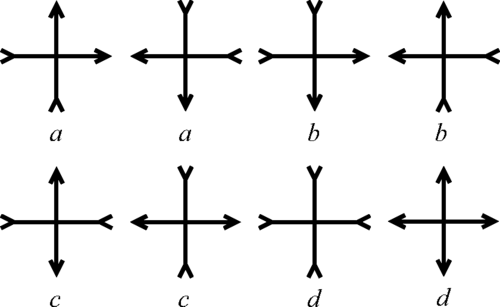 9.1.2018 Research publication
9.1.2018 Research publication
Original electric-vertex formulation of the symmetric eight-vertex model on the square lattice is fully nonuniversal
The partition function of the symmetric (zero electric field) eight-vertex model on a square lattice can be formulated either in the original “electric” vertex format or in an equivalent “magnetic” Ising-spin format. In this paper, both electric and magnetic versions of the model are studied numerically by using the corner transfer matrix renormalization-group method which provides reliable data. The emphasis is put on the calculation of four specific critical exponents, related by two scaling relations, and of the central charge. The numerical method is first tested in the magnetic format, the obtained dependencies of critical exponents on the model's parameters agree with Baxter's exact solution, and weak universality is confirmed within the accuracy of the method due to the finite size of the system. In particular, the critical exponents η and δ are constant as required by weak universality. On the other hand, in the electric format, analytic formulas based on the scaling relations are derived for the critical exponents ηe and δe which agree with our numerical data. These exponents depend on the model's parameters which is evidence for the full nonuniversality of the symmetric eight-vertex model in the original electric formulation.
by
Roman Krčmár and Ladislav Šamaj
Phys. Rev. E 97, 012108 (2018) |+++| APVV-16-0186 (EXSES), VEGA 2/0130/15 (OAQS), |


